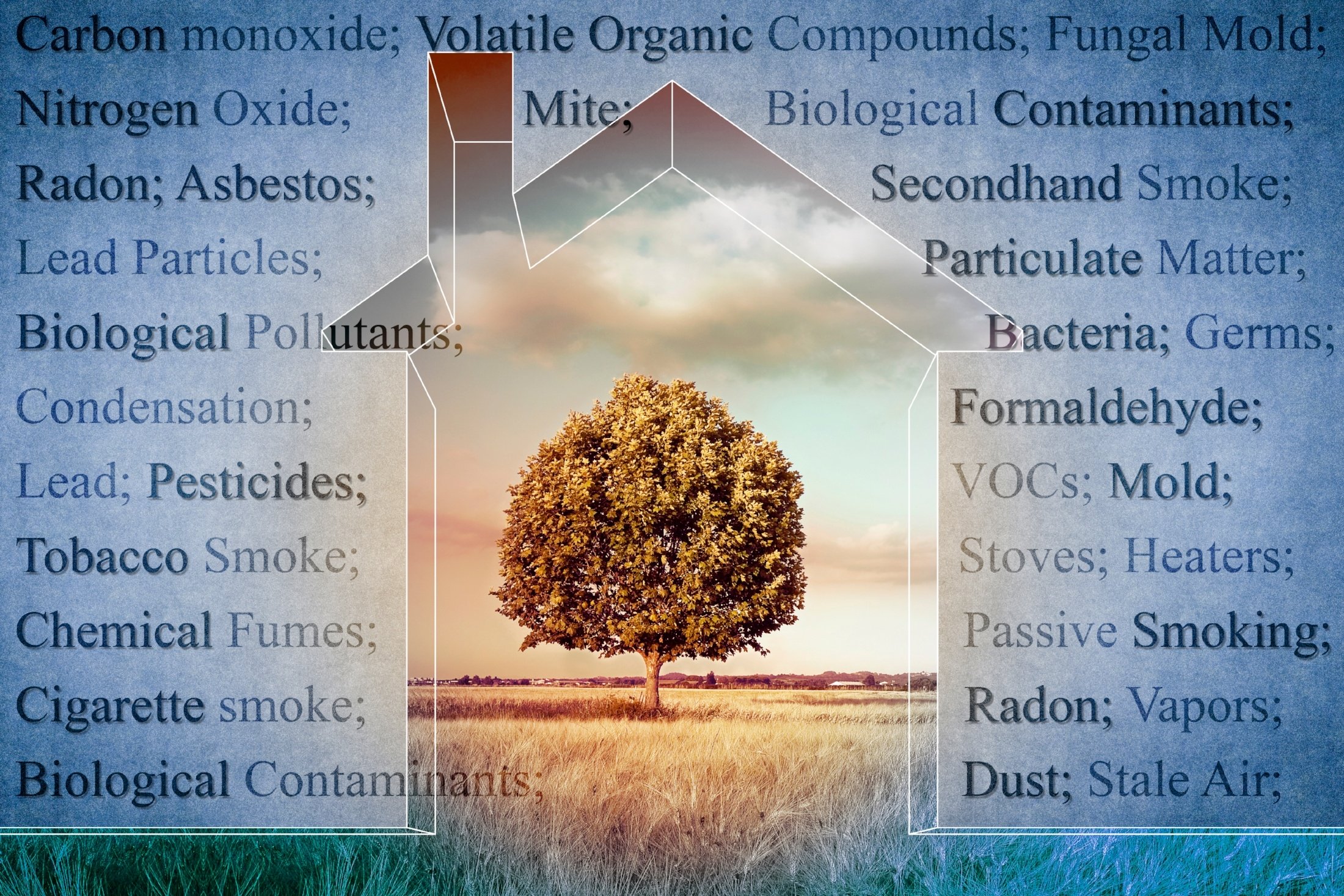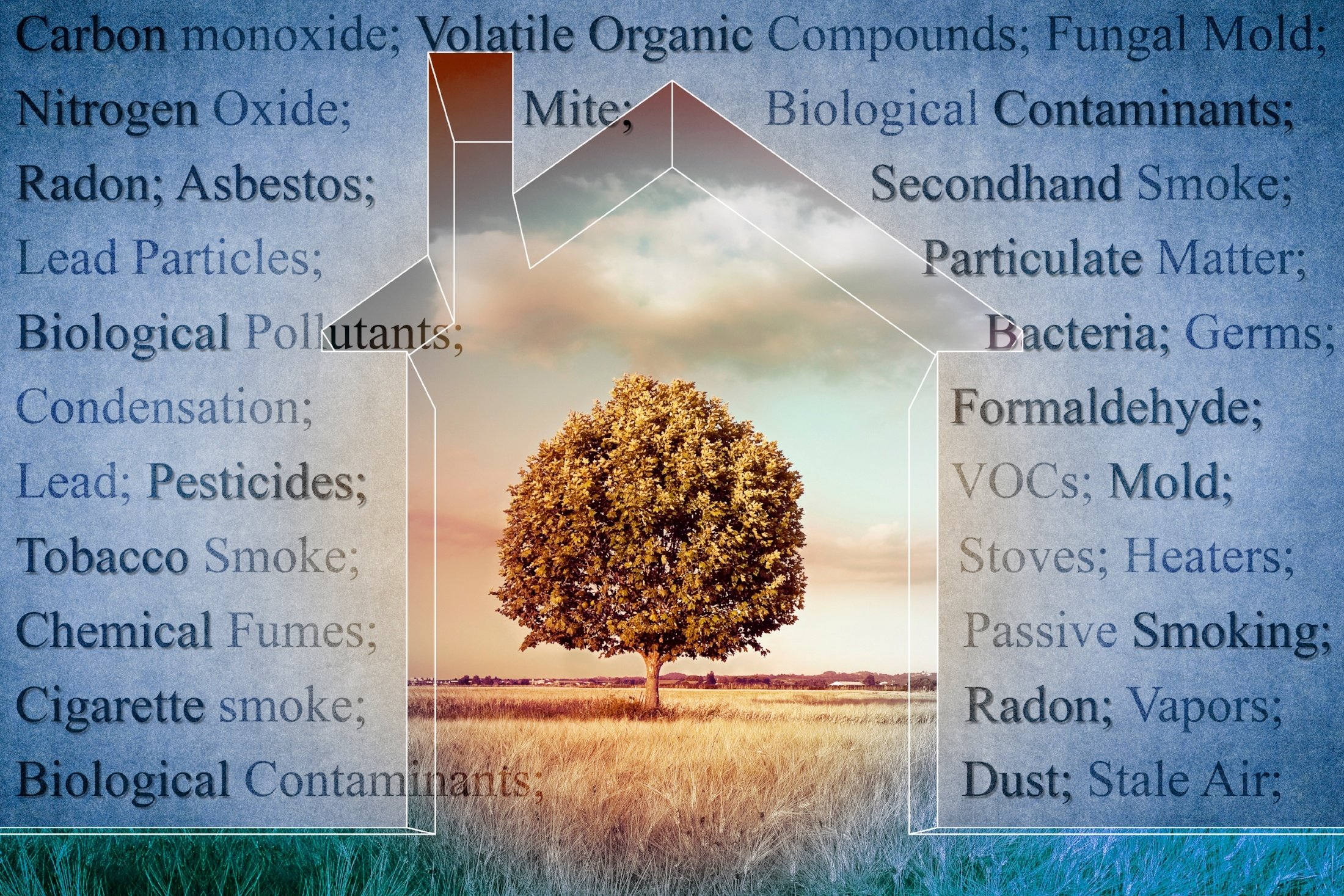
Much-loved 1960s pop group, 'The Hollies' certainly understood how important the air that we breathe is. And while we don't necessarily need it as a conduit to love another, we do require healthy air around us (for general inhalation purposes) if we're not going to succumb to various illnesses. With this very much in mind, we've compiled a quick blog to summarise just what you need to perform a standard air quality assessment. Although focusing on an indoor air quality viewpoint.
And that's because that time of year is upon us once again, when we traditionally tend to stay under roofs a lot longer than during seasons other than winter. Which basically means we're more susceptible to breathing in great big lungful’s of bad air, if we're not duly diligent to our immediate surrounds.
It's not just about the domestic scene, either, as conducting an air quality assessment makes for good business too. And that's because dirty indoor air can end up costing companies money. Think of the common calculus which reads something akin to this following equation. Employee absenteeism x reduced productivity = impacted profit margins. The other threat to company coffers also comes in the masked threat of dirty equipment. The masked bit referring to the coverage of dust which can infiltrate machinery in certain circumstances and lead to unforeseen (and costly to repair) breakdowns.
See how we're building a picture of how poor air quality in the workplace can stealthily wreak havoc if left unnoticed?
It may be difficult to imagine, but compromised indoor air quality can often have more serious ramifications to the general public's health and wellbeing than that being freely circulated outdoors. And when you remember that outside we're witness to diesel fumes and industry pumping out a noxious mix of chemical-derived particulates for a quiet start, that's a pretty serious statement.
Yet it's grounded in cold, hard facts, nonetheless, with the truth of the matter often being inescapable. We're talking about a smorgasbord of airborne nasties which could be all around us at any time whilst we're indoors. These indoor pollutants predominantly stretch to biological contaminants, carbon monoxide, radon’s, nitrogen oxide, formaldehyde and an array of cleaning products too, for that matter.
OK. But What Does an Indoor Air Quality Checklist Actually Look Like?
Valid question, and one which doesn't have a cover-all answer, we're afraid. Not least because you can't execute a 'one size fits all' approach to the rudimentary carrying out an indoor air quality assessment, due to the variable natures of different business set ups and practices.
That being said, there are a number of widely recognizable points which should always be both considered and addressed irrespective, and which envelope the basics of indoor air hygiene and best practices as such.
Easier to apply if divided into key areas within a property, the essential criteria described after the gap does extend to all parts of a business premises where employees and the general public congregate.
• Ensure that there are no obstructions around exhaust vents, ventilation units and air supplies per se, and that the assemblages are fit for purpose and operating to their optimum outputs. So that clean air can circulate without any issues
• Stay vigilant for any odours, mildew or signs of water damage which may raise suspicions; all of which can indicate compromised indoor air quality. By a similar token, keep routine tabs on temperatures and humidity levels to make sure that levels remain consistent, as any discrepancies in indoor air temps can result in the appearance of mould or mildew. Which subsequently impact on air hygiene
• Monitor for evidence of insect or rodent activity, especially the presence of either droppings or nests. Employee/general public health can be affected if substantiated
• Smoke should be banished to outdoor environments, with any employees who smoke referred outside
• Working areas of offices, factories, warehouses, etc should be dusted and cleaned habitually, with schedules in place which need to be strictly adhered to at all times
• Prioritise the upkeep of all equipment and machinery, and ensure the maintenance of everything robustly complies with manufacturers’ guidelines
• Vehicle should not be permitted to park/run their engines in close proximity to internally-serving air vents
• On a similar note, chimney stacks and/or industrial plants situated nearby should be acknowledged in terms of ensuring that any potential outside sources of air contaminants are kept at bay within your business premises
• Doormats located at all external entrances to buildings need to be subjected to regular cleaning to avoid transfer/distribution of contaminants. What's more, rubbish disposal areas must be sighted a safe distance away from air vents, windows and doors to eliminate risk of poor air quality
• Drainage away from the building(s) should be closely monitored so as to nullify the threat of water damage/onset of mould. Same protocol regarding sprinklers; ensuring that they spray AWAY from buildings and any air vents
• Adequate ventilation should be paramount in operator's thoughts, when using chemicals to avoid secretion of vapours indoors
• Always check for leaks, odours, disconnections and deterioration when facilitating combustion appliances, while simultaneously advocating good flue and exhaust hood practices. Extending to the scrutinising of flues (both inside and outside) to rule out the build-up of soot and other contaminant materials
So How/Where Would You Suggest Starting an Indoor Air Quality Assessment?
A walkthrough of a building, acts as a good point to begin the process of ensuring air hygiene remains at optimum levels. A simple walkthrough can determine the basics, followed by the collecting of detailed information observed en route. For example, identification of area where positive (or negative) pressure should be maintained, acknowledging record of locations that need monitoring (or correction), record of control settings and operating schedules and familiarisation with inventory of HVAC system components needing repair, adjustment, or replacement.
Areas covered by this initial taking in of surrounds might readily include housekeeping (carrying out evaluation of cleaning schedules and procedures, and confirming proper use and storage of materials), shipping and receiving (review of loading dock procedures and checking of pressure relationships around loading dock in specific situations) and pest control (review pest control schedules and procedures, as well as ventilation methods used during pesticide application).
Elsewhere it's always advisable to pay particular attention to indoor areas which have been renovated, redecorated or remodeled (to establish materials and procedures used to minimize future problems).
At the End of the Day Just Why is Assessing Indoor Air Quality So Important?
Because as humans we spend on average over 90% of our time enjoying indoor spaces. And within these four (or more) walls lurk a number of dormant threats to our health. To the extent that they could hamper the quality of our lives. Literally everything from the occupants of the building themselves (courtesy of bioeffluents) through to building materials and furnishings (e.g. VOCs, formaldehyde) and the processes that occur within buildings (e.g. smoking, photocopying and heating, ventilation and air conditioning (HVAC) components). And then of course, outdoor contaminants can be added to this already heady mix of endogenous pollution, via the ventilation system or by infiltration.
Who is Best Qualified to Carry Out an Indoor Air Quality Assessment?
Ideally experts in air quality and hygiene control and management are deemed best placed to perform an indoor air quality assessment, to guarantee that every proverbial 'T' has been crossed and 'I' dotted. These professionals are well versed in actioning the physical aspect of carrying out air quality sampling, and the process which ascertains whether or not the air that we breathe at our places of work is continually safe.
How is Air 'Sampled' in Terms of Quality and Hygiene?
Primarily a few different tests are conducted at this early stage, included among which are long-established methods such as fixed-station sampling and monitoring, continuous monitoring, integrated sampling, grab sampling, monitoring of ventilation rate and personal monitors and/or sampling devices. Special meters along with smoke and colorimetric detector tubes can determine if there’s a problem with the air from the outset of elementary investigations.
Will a Report be Compiled and Issued in the Aftermath of Indoor Air Quality Sampling Having Taken Place?
Yes. And this literature will typically comprise of a number of different criteria’s being fulfilled and box-ticked thereafter. All carried out in strict accordance with HSE stipulations, suffice to say. Indoor air quality monitoring covers a detailed study of building ventilation and air conditioning systems, coupled with the accumulation of representative samples of the indoor air discovered in the building. All results are then compared and contrasted with industry-governed exposure limits and interpreted to establish the need for any improvements which need to be actioned going forward. In addition to this, any recommendations on biological monitoring and health surveillance required will be forthcoming at this keenly documented juncture.






